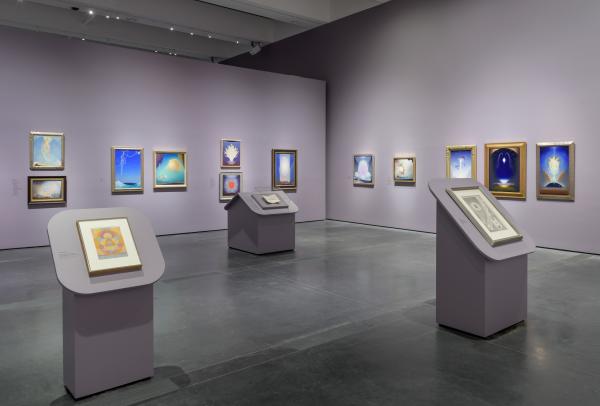In the midst of our fast-paced lives, taking the opportunity to slow down and connect with works of art—and with yourself—provides a needed antidote in these busy and uncertain times.
Looking at something slowly and carefully can be an incredibly rewarding experience. As you look at an object and think about it, it often becomes more interesting. Rather than only focusing on learning about the art, your own personal connections, questions, and emotional responses can all be part of the experience.
You might also notice additional benefits as well: slow looking can help you be more aware of your environment, improve your observation and description skills, and practice looking deeper. This process can also help you to see things from multiple perspectives, appreciate complexity, and make unexpected connections. Last but not least, taking time to carefully look at a work of art allows you to pause, reflect, and restore.
LACMA regularly offers programs to slow down and connect with works of art through careful looking, conversation, mindfulness, and creative activities, like our Mindful Monday and Art & Meditation programs. With multiple exhibitions currently on view that invite visitors to slow down and look carefully, we also wanted to share some ideas for you to experience this on your own at the museum.
There’s no one way to mindfully experience a work of art—all you need is some dedicated time, anywhere from 5–10 minutes, or even up to an hour. Below are a few tips for getting started, followed by prompts for four current exhibitions.
-
Make sure you are comfortable—take a moment to slowly inhale and exhale three to four times. Feel your feet on the ground. Scan your body, noticing any places that are particularly tense. Aim to focus your attention completely in the moment while looking at the artwork. If you hear other sounds, that's okay; let them help focus your experience of being in this place at this time.
-
Let your eyes wander—allow time for your eyes to explore the entire work, but also let your eyes settle on details that you find interesting. This approach is about allowing yourself the process of really taking in an entire work.
-
Be patient, and trust your own experiences, knowledge, and intuition—prioritize your own discoveries and making a more personal connection with the work. Feel free to change your position to look from different perspectives. Each time you move, ask yourself: what do I see now? What changes do I notice?
-
After you have spent extended time with the work, it can be enriching to collect and organize some of your observations, ideas, and questions—with a friend, in a notebook, or in your own mind. Does the artwork include interesting juxtapositions? What has the work made you think about from your own life? Does spending time with the work invite new questions?
-
Look again—some artworks only inspire deeper connections after you have looked and thought about them for a while. The more you look, the more you will see!
New Abstracts: Recent Acquisitions
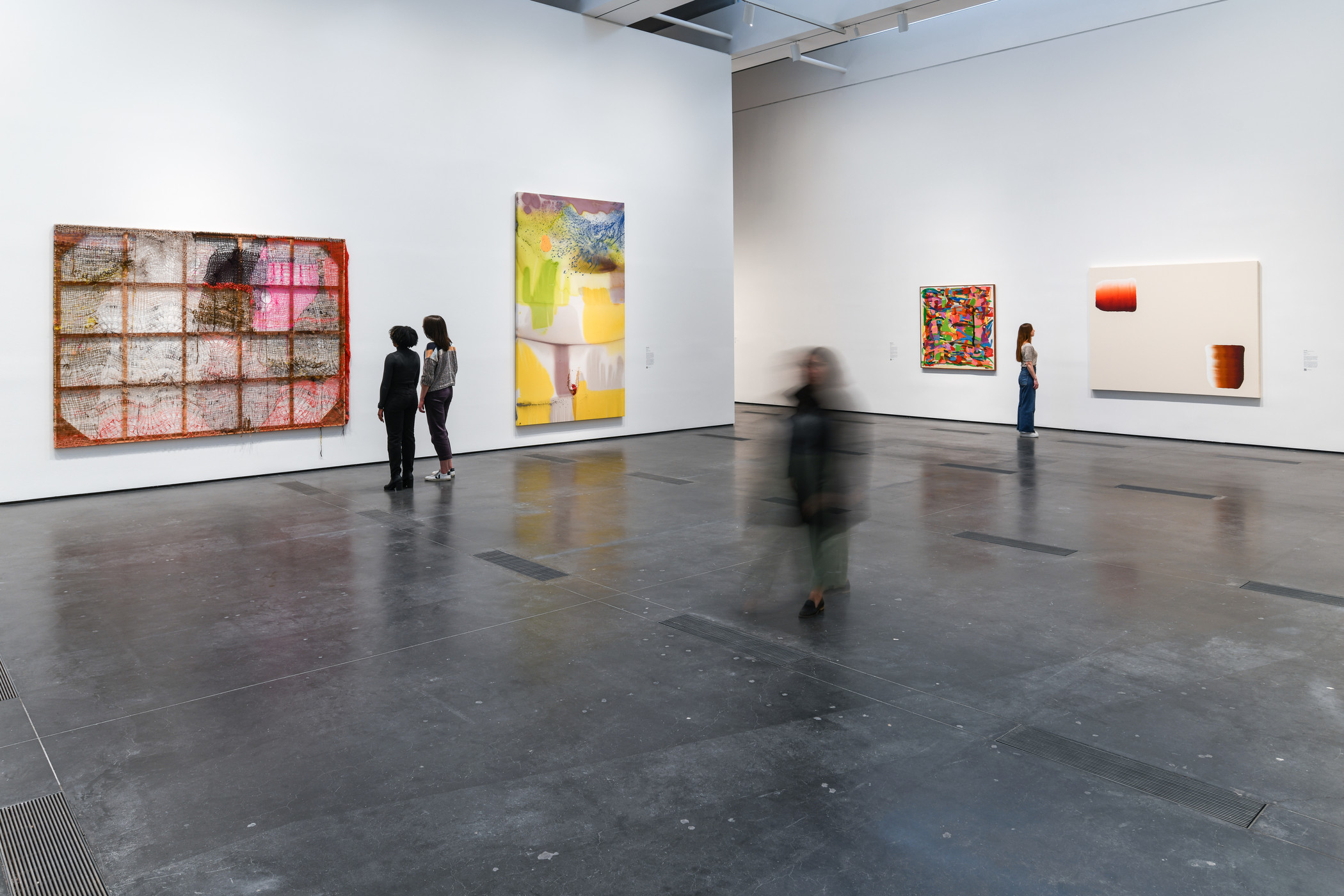
In the central gallery of the Resnick Pavilion, New Abstracts includes nine works that showcase a wide range of artistic innovation, as well as opportunities for very personal responses. As you enter the space, take a moment to look at the works on all four walls of the gallery. Then, select one work in the exhibition with which you’d like to spend more time.
-
Take a few minutes to look at the work in its entirety. Pause when you find an interesting detail. Spend time with that part of the work—what was it that captured your attention?
-
You can also try different perspectives—take a few steps back, or move to the side. What do you notice from these new perspectives?
-
Let your eyes continue to wander. How does your eye travel through this work? Notice the colors and textures, as well as the scale of the work. Is there movement within the work, or does it seem still? Are there interesting dialogues that arise? After your initial interest in the work, maybe you find something more in this work that intrigues you, something that is surprising or unexpected, or even something that will you continue to wonder about in the future.
Conversing in Clay: Ceramics from the LACMA Collection
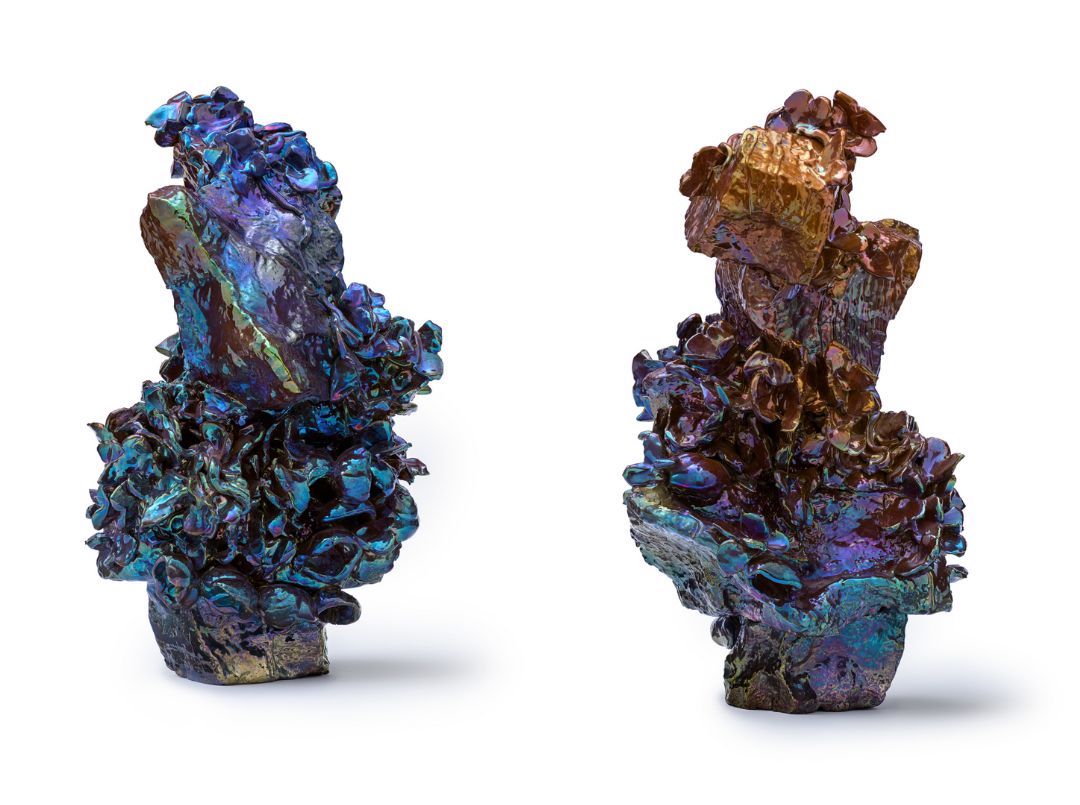
Among the many wonderful works on view in Conversing in Clay, look for Julia Kunin’s Indigo Garden (2012), on display in a case on the north wall.
-
Three-dimensional works allow the opportunity for you to look at the work from different directions. Take time to explore multiple perspectives—notice the curves and shapes on the surface of this work. Take notice of the textures and colors, and how they change with different angles. What are the effects of the lighting on this work?
-
As you spend time with the sculpture, do its shapes evoke any particular associations for you? (You might, or might not, make comparisons with the other ceramic works on display in the same case, or others in the gallery.) What impact does Kunin’s choice of iridescent ceramics have on your experience of the work? In what ways do the richly textured surfaces and unique glazes work together?
-
How has the work changed the longer you have looked at it?
The Five Directions: Lacquer Through East Asia
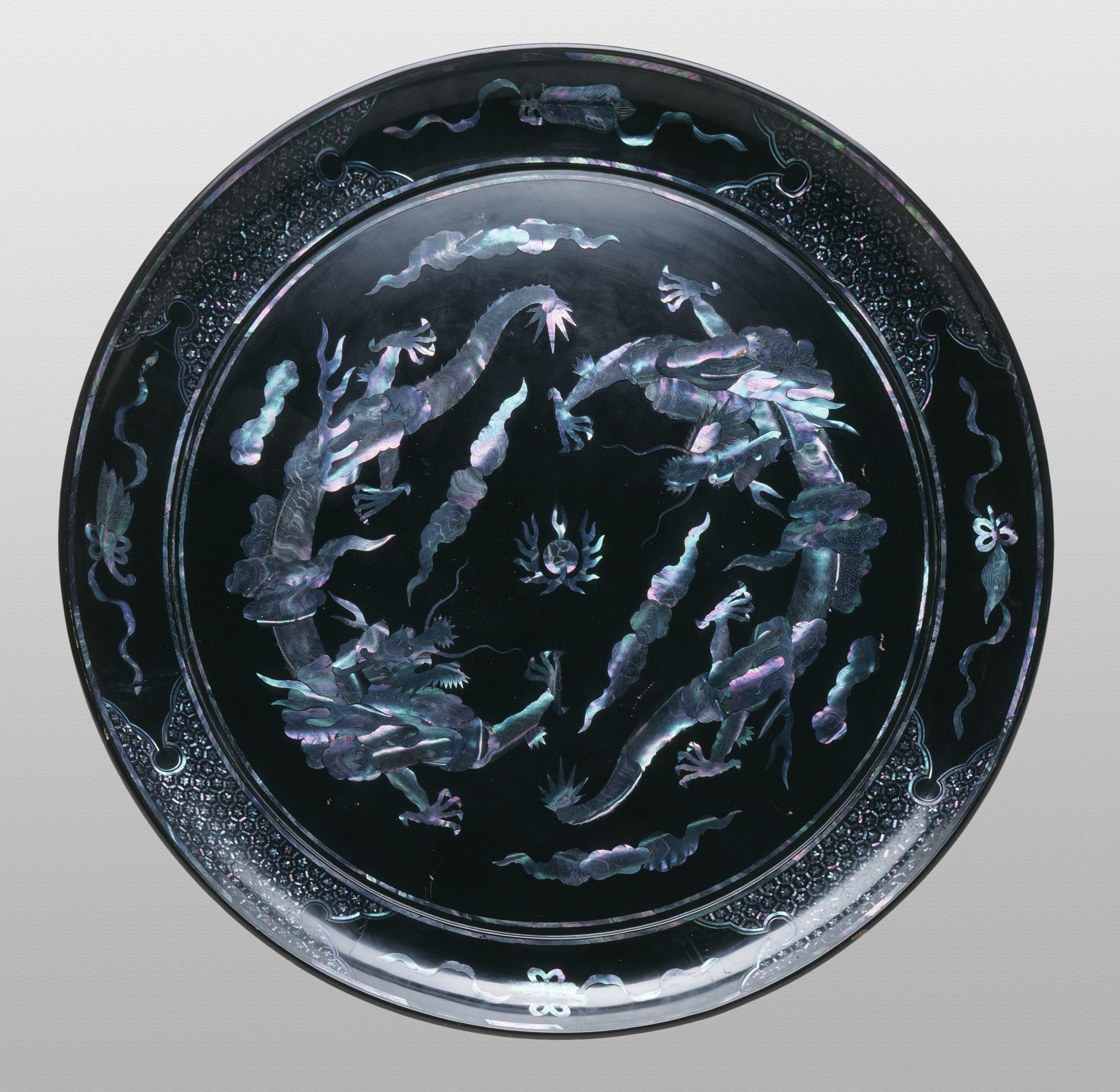
Look for the large circular artwork on the western wall of The Five Directions. Given the size, you’ll likely want to take extra time to carefully look at all of the details in this work.
-
What do you notice about this work, and how would you describe what you see?
-
The title of this work—Circular Tray with Two Dragons Chasing a Flaming Pearl—connotes action. Amidst clouds, two five-clawed dragons encircle a flaming pearl at the center. If you were to write a story, or a poem, to accompany this work, how would you begin?
-
Do the colors or shapes remind you of things in your own life? Does your imagination play a role when looking at this work? How so?
The many images of nature throughout this exhibition allow you to let your eyes and mind wander among the exquisite animals, flowers, and natural scenes.
Another World: The Transcendental Painting Group, 1938–1945
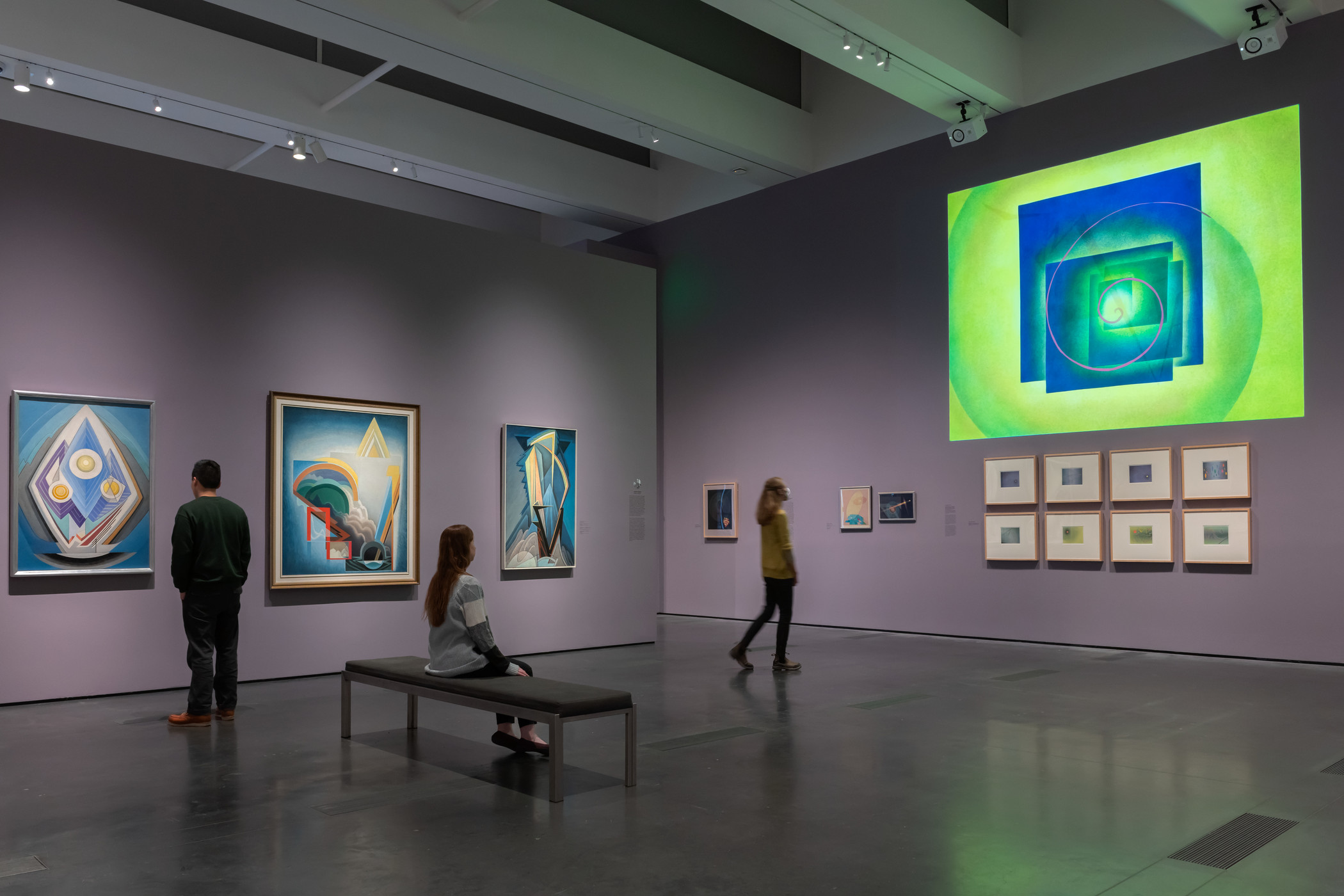
Another World is organized by the individual artists who made up the loosely configured Transcendental Painting Group. Although all the artists sought to explore spiritually heightened abstraction, they worked in different styles. Take time to walk through the exhibition and find a work with which you’d like to spend time.
-
Once you’ve selected a painting, let your eyes move through the work. How do the colors, lines, and shapes work together in this painting?
-
Does the work seem quiet, or loud? Does it suggest movement, or seem still? Does the work express an emotion? How so? Are there things that can be shared through abstraction that might not be said through words or other forms of communication? What else do you find important or interesting in this painting?
-
For many of the artists in the Transcendental Painting Group, there was a sense of awe about the world that they wanted to communicate in their art. In what ways have you experienced awe in your life? How do you share or remember those experiences?
After spending time with these works, we hope you find yourself refreshed and restored. And we look forward to seeing you in the galleries or at an upcoming Art and Wellness program.



